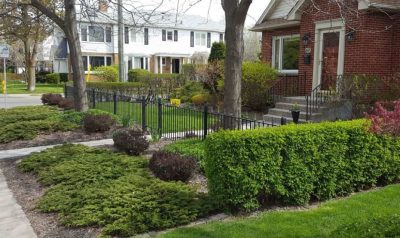
Home renovations are exciting, but keeping track of everything can be overwhelming. A 2024 Renovation Trends report found that 58% of homeowners struggle to track renovation progress. Without proper documentation, it’s easy to lose sight of your budget, timeline, or even important project changes.
Whether you’re remodeling one room or your whole house, keeping clear records helps you stay organized, avoid disputes, and show the value of your upgrades.
In this guide, you’ll learn how to document your renovation step-by-step using photos, checklists, and easy tools—so your project stays on track from start to finish.
How to Document a Home Renovation Project
Documenting your home renovation is just as important as the renovation itself. It helps you stay organized, avoid mistakes, and add value when it’s time to sell. Here are some methods you can use to document the progress of your home renovation project.
Start with a Renovation Documentation Plan
Before the renovation begins, make a plan for what and how you’ll document. This keeps everything organized and prevents important details from slipping through the cracks.
Define What You’ll Track
Decide what information is important to record. Most homeowners track:
- Budget – how much you’re spending and on what
- Materials – types, brands, and where they were purchased
- Timelines – expected vs. actual dates for each phase
- Milestones – key steps like demolition, plumbing, painting, etc.
Set Your Documentation Frequency
You don’t have to track everything every day—just stay consistent. You can choose to:
- Record updates daily if work is moving quickly
- Take notes weekly to capture major changes
Log progress by project phase, like before demolition, after electrical work, or once painting is done
Project Management Tools for Homeowners
These apps help you organize tasks, track progress, and store documents:
- Construction WIP Software: Specialized tools for tracking work-in-progress, budgets, and contractor updates in real time (great for large-scale renovations)
- Trello: Best for organizing tasks with boards and checklists
- Notion: Flexible for notes, timelines, and images in one place
- CoConstruct: Designed for remodeling projects; includes budget tracking, communication, and scheduling
Apps for Photo, Video, and Time-Lapse Capture
For capturing and storing photos and videos, use Google Photos or iCloud for easy organization. The Time Lapse Camera app is great for documenting transformations, while Dropbox is perfect for backing up and sharing large files.
Digital vs. Physical Binders: Which to Choose?
- Digital binders (using Google Drive, Dropbox, or OneDrive) are best for easy access, sharing, and automatic backups.
- Physical binders are helpful if you prefer printed documents, want to keep material samples, or need hard copies for inspections.
What to Include in Your Renovation Records
To keep your renovation organized, save all important documents in one place. Start with your contractor agreements, estimates, and invoices, these show what work is being done, how much it costs, and what was paid.
Keep permits and inspection reports, as these prove your project follows local rules. Take photos and videos before, during, and after each stage to show progress and results. Also, write down any delays, changes to the plan, or material swaps—these notes help explain why timelines or costs shifted.
Organizing Your Renovation Documentation
To stay organized, create a simple system. Use clear file names and folders, like “Plumbing Receipts” or “Kitchen – Before Photos,” so you can find things quickly.
Upload everything in cloud storage like Google Drive or Dropbox so it’s safe, backed up, and easy to access from anywhere. To make searching faster, add tags or labels like “receipts,” “timeline,” or “permit” so you can find documents in seconds when needed.
Using Visuals to Track Renovation Progress
Taking photos and videos is a good way to track how your renovation is going. Try to take pictures from the same angle each time, and use good lighting so changes are easy to see. A time-lapse camera can be set up in one spot to automatically capture progress over days or weeks.
You can also create before-and-after comparisons by saving photos from each stage—this helps show the improvements clearly and is useful for resale or sharing with others.
Staying on Track: Weekly Review Checklists
Each week, take a few minutes to check how the work is going. Look at the space and compare it to your plan. Are tasks being finished on time? Are materials being used as expected? Use a simple checklist to stay organized—include items like completed tasks, any delays, materials received, and what’s next.
Talk to your contractor regularly and share updates with anyone involved in the project. Weekly check-ins help catch problems early and keep everything moving smoothly.
Sharing and Showcasing Your Project
Once your renovation is underway, you can create a digital renovation diary or blog to share the journey. This could be a simple website, a Google Drive folder, or a series of posts that show before-and-after photos, videos, and progress updates.
Many people also share updates on social media or with family and friends to keep everyone involved and excited. Documenting your progress doesn’t just make great memories—it can also help later when you sell your home.
A well-recorded project shows buyers the quality of work and improvements made, which can increase resale value and return on investment (ROI).
Why Documenting Your Renovation Progress is Essential
Keeping detailed records during your home renovation isn’t just about staying organized—it offers significant benefits that can protect your investment and provide peace of mind.
Safeguard Against Disputes with Contractors
Maintaining a thorough record of contracts, receipts, and progress photos can be invaluable if disagreements arise with contractors. These documents serve as evidence of the agreed-upon work and materials, helping to resolve conflicts efficiently and ensuring that all parties are held accountable.
Easier to Secure Permits and Insurance Claims
Proper documentation, including permits, inspection reports, and detailed records of the renovation process, is essential when dealing with insurance companies or local authorities. In the event of damage or when verifying compliance with building codes, having organized records can expedite claims and prevent potential legal issues.
Add Value During Resale with a Renovation Log
A well-documented renovation history can significantly enhance your home’s appeal to potential buyers. Providing before-and-after photos, lists of upgrades, and proof of quality workmanship demonstrates transparency and can justify a higher asking price. Buyers are more likely to trust and invest in a property with a clear maintenance and improvement record.
Common Challenges and How to Solve Them
When documenting your home renovation, some mistakes can cause problems later. Here are common challenges and easy ways to fix them:
- Forgetting to document early stages: Missing photos or notes at the start means losing important proof of the project’s original condition. This can be confusing later if issues arise.
- Solution: Start documenting from day one. Take photos and notes before any work begins to capture everything clearly.
- Not backing up digital files: If your phone or computer crashes, you could lose all your photos and documents.
- Solution: Always back up your files. Use cloud storage like Google Drive or Dropbox to keep copies safe and accessible anytime.
- Skipping permissions when recording workers: Taking photos or videos of workers without asking can lead to privacy concerns or disputes.
- Solution: Get permission before recording. Ask contractors and workers politely to respect their privacy and avoid misunderstandings.
FAQs
1. Why is it important to document my home renovation?
Documenting your renovation helps track progress, manage budgets, and provides evidence for insurance claims or future resale. It ensures transparency and can prevent disputes with contractors.
2. What should I include in my renovation documentation?
Include contracts, permits, invoices, photos of each phase, and notes on any changes or delays. This comprehensive record keeps your project organized and accountable.
3. How can I effectively organize my renovation documents?
Use clear naming conventions and folder structures, whether digital or physical. Cloud storage solutions like Google Drive or Dropbox offer easy access and backup.
4. What tools can assist in documenting my renovation?
Project management tools like Trello or Notion help track tasks and timelines. For visuals, apps like Google Photos or time-lapse cameras can capture progress effectively.
5. How often should I update my renovation records?
Regular updates, such as weekly reviews, help monitor progress and address issues promptly. Consistent documentation ensures nothing is overlooked.
6. Can documenting my renovation increase my home’s resale value?
Yes, a well-documented renovation showcases the quality of work and improvements made, which can be appealing to potential buyers and may enhance resale value.








